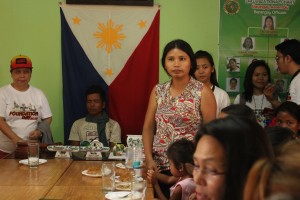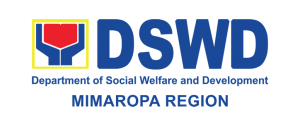
MAGSAYSAY, OCCIDENTAL MINDORO – Officials and representatives of various government agencies, Civil Society Organizations (CSOs) and the Local Government Unit (LGU) attended the Regional Advisory Committee (RAC) Onsite Field Visit last March 25-27, 2014. The activity initiated by the Department of Social Welfare and Development (DSWD) aims to converge the different programs and services of the various partner-agencies and CSOs to ensure the development in the lives of the poor and vulnerable.
“Mandato ng gobyerno na tayo ay magkita-kita upang gumawa ng mga polisiya upang lalo pang matulungan ang ating mga kababayan,” said DSWD Regional Director Wilma D. Naviamos. She also said that through this activity, stakeholders can evaluate the delivery and effectiveness of programs implemented.
The participants visited six areas in four barangays: Paclolo, Laste, Calawag and Nicolas. They observed a Family Development Session and visited a health center, interacted with partner-beneficiaries and addressed concerns on provision of assistance.
Various infrastructure projects were also visited such as high school building, potable water system and box culverts created through the Kapit-Bisig Laban sa Kahirapan – Comprehensive and Integrated Delivery of Social Services (Kalahi-CIDSS) project. Moreover, a family working in a furniture business with the assistance of the Sustainable Livelihood Program (SLP) gave stakeholders a deeper understanding of how convergence works and changes a household and the whole community in turn. The Technical Education and Skills Development Authority (TESDA) also informed them that they can provide technical trainings such as furniture design to further improve their skills.
Prioritizing Indigenous People (IP)
An encounter with the IP partner-beneficiaries was one of the highlights of the visit. The participants were able to interview the IPs on the

pressing issues they are facing. They tackled issues on infrastructure such as provision of health and educational facilities, farm-to-market road and livelihood. The local government can be tapped in providing infrastructures with the help of Kalahi-CIDSS while its municipal agricultural office also committed to give seeds to IP families to help them start planting crops.
It also focuses on reaching the IP students in their areas and providing an opportunity to finish college through scholarships. The Department of Science and Technology (DOST) and National Commission on Indigenous People (NCIP) offered their programs where grantees are entitled to an allowance or refer them to TESDA for vocational and technical courses. The DSWD through the Pantawid Pamilya will provide names of IP partner-beneficiaries to the said agencies to avail the scholarships, however, it was recommended that the required passing grade be reduced from 85 to 80 percent to increase the number of grantees.
Furthermore, IP areas such as a spring named “Bukal” in Barangay Nicolas will be lobbied by the NCIP together with the local government to the Department of Tourism (DOT) for accreditation as tourist spot. This will help boost tourism in the municipality as well as incur livelihood to the people in the barangay.
Sharing the right information
Current status of the DSWD programs and services and interventions of the partner-agencies and CSOs were presented. It was emphasized that provinding right information allows for the agencies to properly assess the needs of the people and community. “If we have the right information, we can coordinate and converge better,” said Governor’s Executive Assistant Romy Ruiz.
“Information is power,” as Dir. Naviamos stressed, and to be able to provide better services to the people, it was agreed that it should be shared and coordinated. One resource of the DSWD MiMaRoPa, its Supply-Side Assessment (SSA) mapping, where accurate data about availability of educational and health facilities are found, is shared to other stakeholders to highlight what services can be offered to specific areas.
The field visit is one of the many venues where DSWD, with the help of various stakeholders, continues to provide quality service to the people by working together to achieve their dreams and realize their full potential.
The RAC Onsite field visit was attended by the DSWD regional and provincial staff, DOST, DOT, NCIP, TESDA, Department of Health, Department of Labor and Employment, Commission on Population, PhilHealth, PLAN International, iHELP, and Ministries without Borders. ###
![]()


